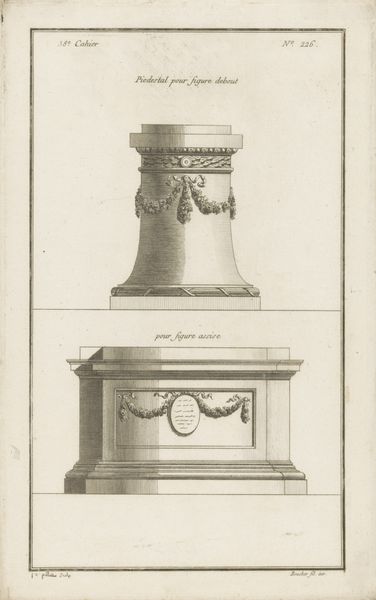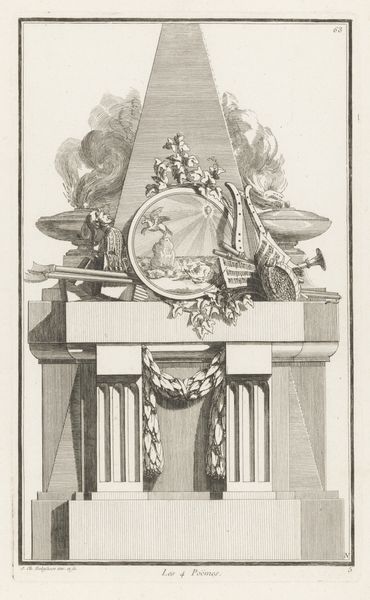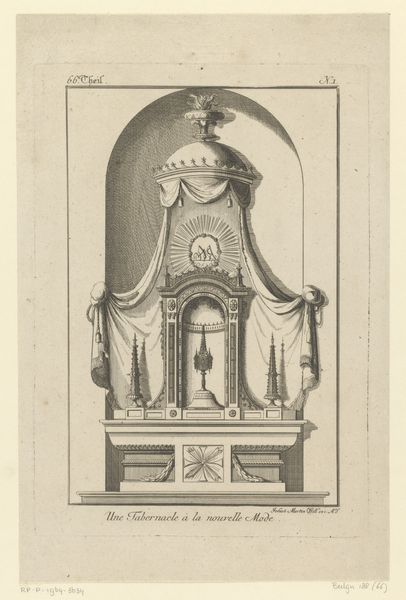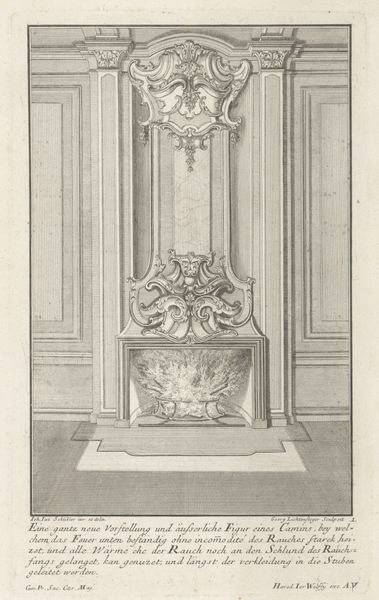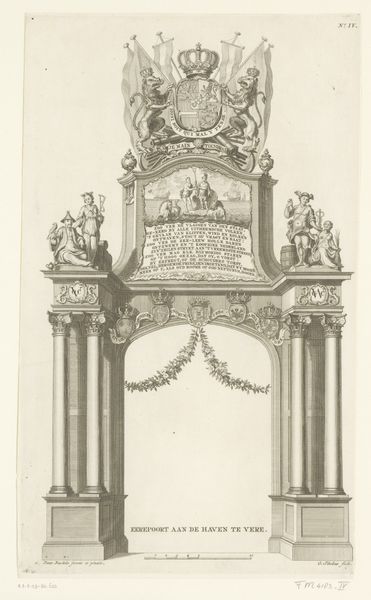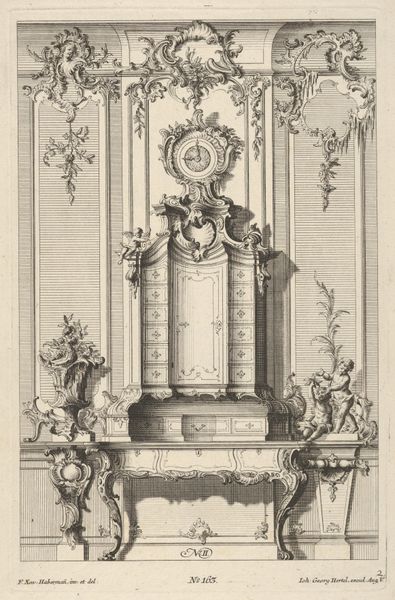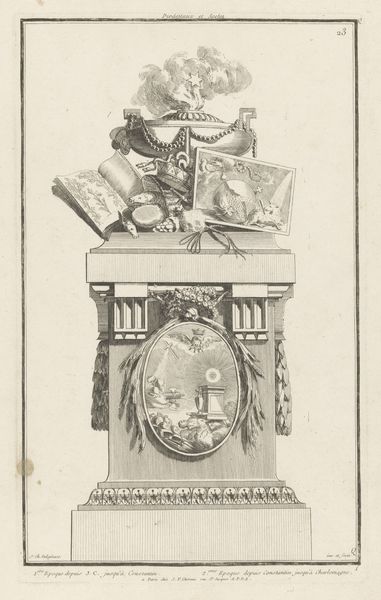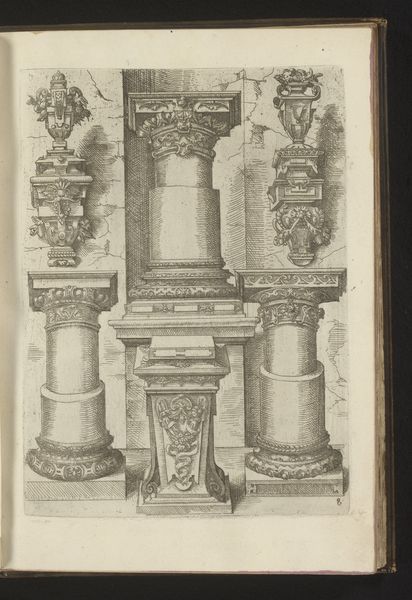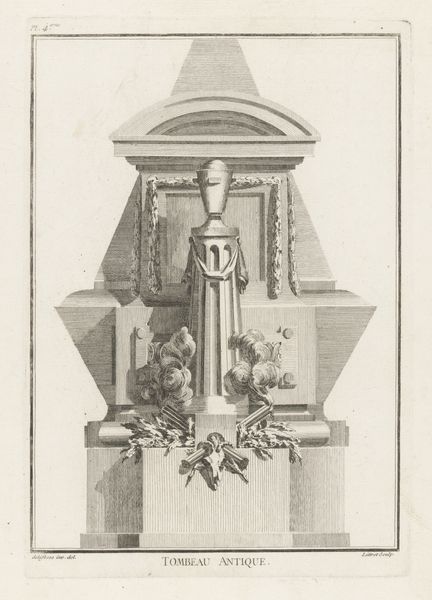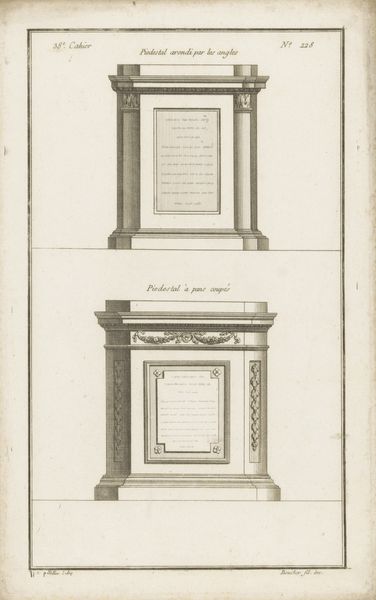
engraving, architecture
#
baroque
#
old engraving style
#
sketch book
#
personal sketchbook
#
sketchwork
#
history-painting
#
decorative-art
#
engraving
#
architecture
Dimensions: height 298 mm, width 189 mm
Copyright: Rijks Museum: Open Domain
Curator: Here we have Johann Balthasar Probst's "Medaillekast," an engraving created sometime between 1709 and 1724. It depicts a very elaborate cabinet, typical of the Baroque style. Editor: My first thought? Over the top! In the best way possible. All those curves and flourishes – it’s a monument to extravagance. It almost looks like it could sprout legs and waltz right out of the room! Curator: Indeed. The cabinet embodies the Baroque era's penchant for ornate design and theatrical presentation, you can observe it through the volume of sketchworks present in it, so it should have been an engraving in his personal sketchbook. These cabinets were not merely for storage; they were statements of power and sophistication. Editor: So, status symbols, pure and simple? Makes you wonder what treasures they were trying to show off, tucked away in all those drawers. Imagine the secrets! And speaking of status, placing it against an oven is really shouting that out to anyone that didn't knew of it. Curator: Exactly. This particular piece, residing now at the Rijksmuseum, hints at the social function of art. Probst's engraving provides us with insight on how art was not only created but circulated, influencing tastes and design trends of the era, showing an image for the middle class that allowed for an insight into noble tendencies. Editor: And here we are, centuries later, still dissecting its charm! Art, it seems, really does transcend time, turning even furniture into juicy historical artifacts. Thank goodness! Curator: I agree completely; exploring pieces such as "Medaillekast" helps us uncover social relationships of the past.
Comments
No comments
Be the first to comment and join the conversation on the ultimate creative platform.

